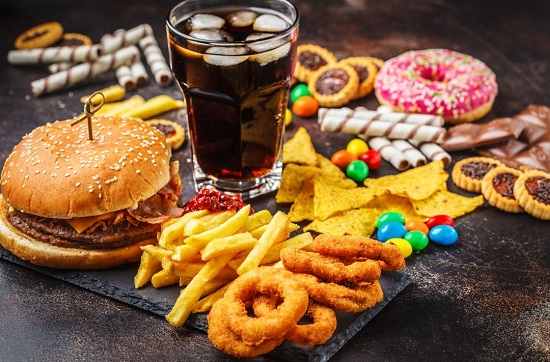If you’ve ever had the munchies after ingesting or smoking cannabis, you know how great everything tastes. Cannabis, food, and hunger are definitely interwoven.
This isn’t always a good thing though. The effect is created from THC stimulating CB1 receptors in the brain. But there are also endogenous cannabinoids (endocannabinoids) that come into play.
These endocannabinoids are connected with an increased desire to eat and weight gain, as they stimulate the brain to believe the body needs to consume more even when it does not. So what’s happening?
The Science Behind Cannabis, Food, and Hunger
We’re cannabis marketing specialists, not scientists. So we won’t go too deep into the science of this.
Here are the basics though.
The human body has an endocannabinoid system. It regulates the whole-body metabolism beyond simply eating. These include fat synthesis in the liver, sugar use by muscles, and insulin secretion from the pancreas. When you smoke or inject cannabis, various cannabinoids jump into action to regulate these many aspects of the metabolism via CB1 receptors.
The CB1 receptor is the same one with which THC engages to deliver the psychoactive effects. Generally speaking, the research shows that boosting stimulation of the endocannabinoid system through CB1 receptors activates the body to accumulate energy reserves.
In other words, CB1 receptors tell your body to keep consuming. Meanwhile, fat cells in your body also express CB1 receptors. That means cannabinoids can directly influence body fat too. It’s no surprise that there’s a correlation between visceral fat and endocannabinoid levels in the body.
This can be all further exacerbated by what you eat.
What You Eat Matters
So we know that cannabinoids influence our hunger levels, food cravings, and intake. But what you eat also influences the endocannabinoids that are currently in your body.
Endocannabinoids are small and fatty molecules that are derived from essential omega-6 fatty acids. The human body needs these essential omega fatty acids because it cannot create them on its own. Throughout much of human history, people consumed equal amounts of omega-3 and omega-6 fatty acids. And keeping this balance was key to good health.
But things have changed.
The typical Western diet contains grossly imbalanced amounts of omega-6 fatty acids now. In many cases, the ratio is 20:1. This is not accidental. Food engineers discovered that processing food with cheap oils high in omega-6 fatty acids kept people feeling hungry and coming back for more. And since endocannabinoids are derived from omega-6 fats, diets rich in these fats lead to higher endocannabinoid levels in the body.
It all becomes a rather vicious cycle. Especially if you’re struggling with weight issues but still want to enjoy your cannabis experience.
The Breakdown
Confused? We’ll summarize the ways dietary fat influences endocannabinoid levels and metabolic health.
In essence, a high omega-6 diet elevates endocannabinoid levels and stimulates further food intake. This, in turn, leads to weight gain, inflammation, and overall poor metabolic health.
The typical American diet consists of a lot of processed foods that are high in omega-6 fatty acids. As such, if you are looking to minimize the munchies when you consume cannabis, you should increase emphasis on foods high in omega-3 fatty acids in your diet. Fatty fish such as mackerel, salmon, mackerel, anchovies, and sardines are high in omega-3 fatty acids – as are some nuts and seeds, soybeans, spinach, and Brussels sprouts.
Easy enough!
Here’s To Your Health
You don’t need to get trapped in the cannabis, food, and hunger cycle. If you keep an eye on minimizing omega-6s and bringing in more omega-3s to your diet, those munchies won’t likely have the hold on you they once did.
Knowledge is pretty tasty, ay? So kick back and enjoy.
And if you’d like more interesting stories on all things cannabis, don’t forget to keep checking back in with us here at our blog!
